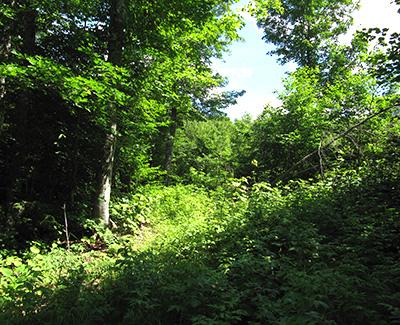Effects of Nonselective Partial Harvesting in Maine's Working Forests

Mechanized partial timber harvesting has become the dominant forest management tool across eastern Canadian and northeastern U.S. forests over the past two decades. Changes in timberland ownership patterns and concern about effects of harvesting practices in naturally regenerated working forests have led to concern that partial harvesting may be detrimental to long-term forest productivity and ecological values. With increasing pressures on forests to supply a range of goods and services to a growing global population with a decreasing forestland base, being able to accurately, precisely, and efficiently sample forest conditions is critical.
NSRC researchers studied partially harvested forest stands across 4 million acres in northern and central Maine. First, they compared six forest inventory measurement methods in 16 stands. Results indicate that some stand-level variables are sensitive to the measurement method. Researchers demonstrated that horizontal line sampling is a viable method that may be well-suited to highly variable forest conditions.
Researchers also assessed characteristics of residual trees in the overstory and regeneration in the understory in 50 of the stands. Partial harvesting in Maine appears to have changed over time, with an increase in complete overstory removal and emphasis on hardwood removals. Contrary to expectations, researchers found that shade tolerant hardwood species dominated regeneration stem counts. Because so little is known about the silvicultural outcomes associated with the range of partial harvesting practices, this study is a crucial first step toward understanding how these practices have influenced current conditions in partially harvested stands on Maine’s working forests.
